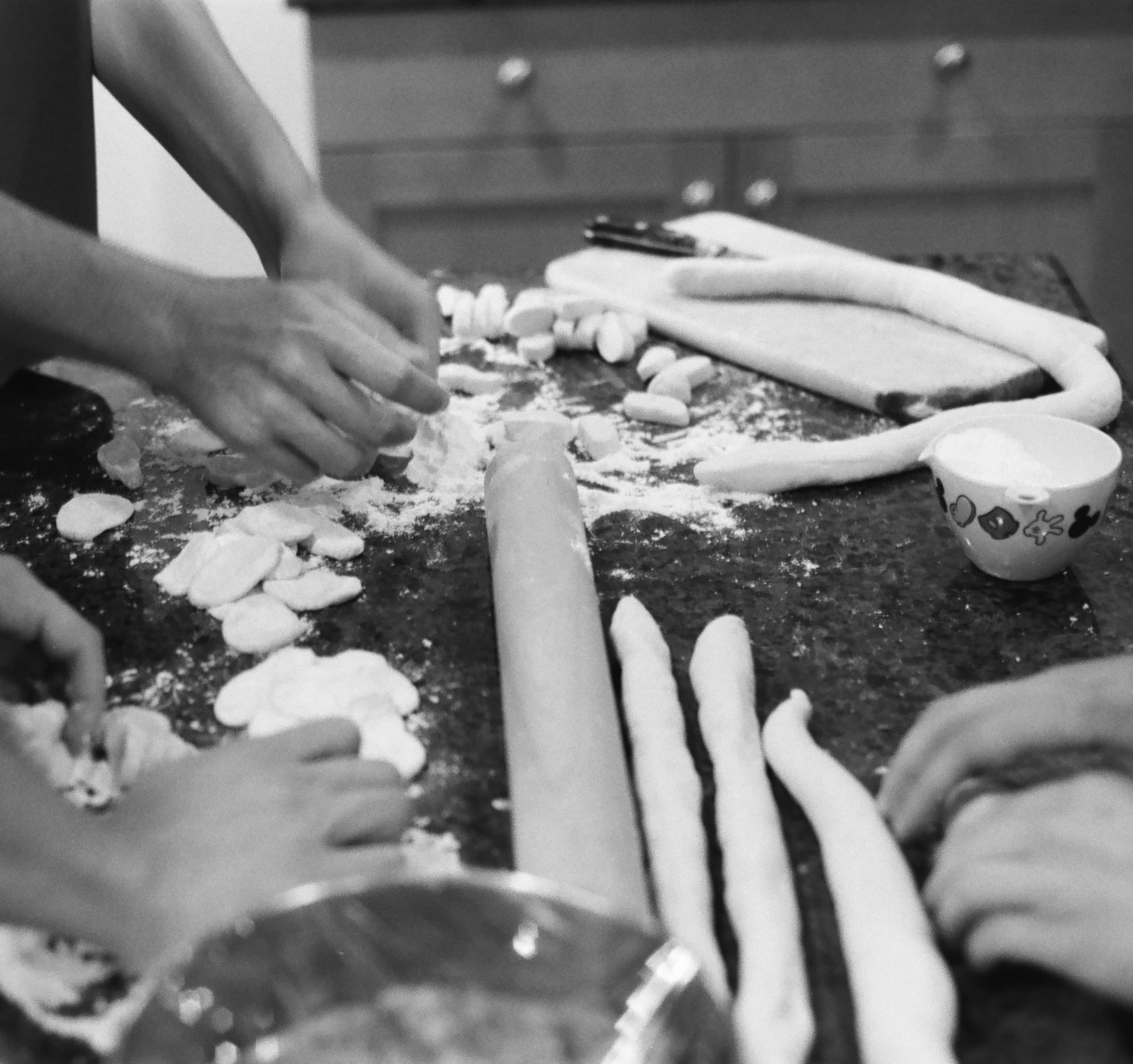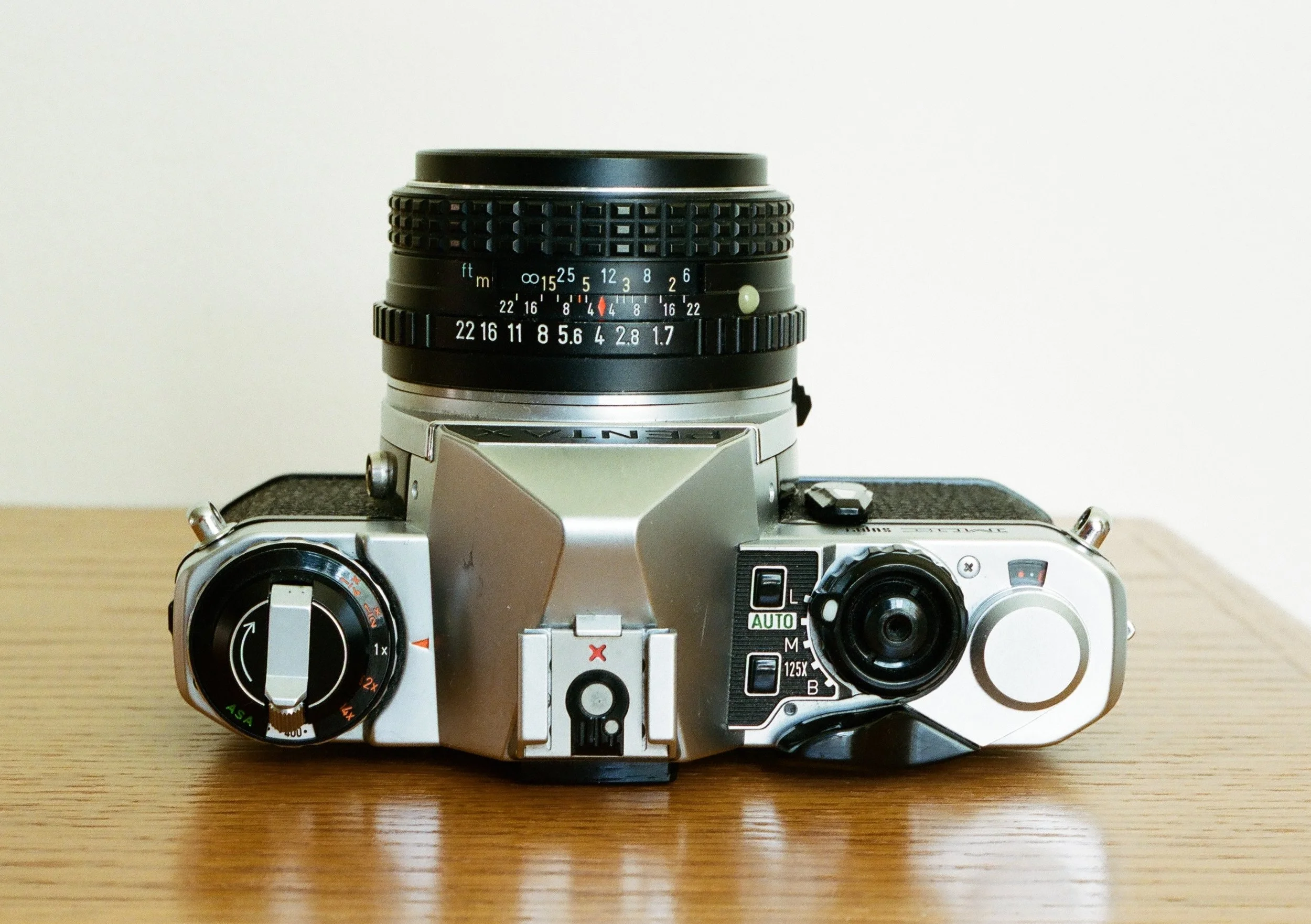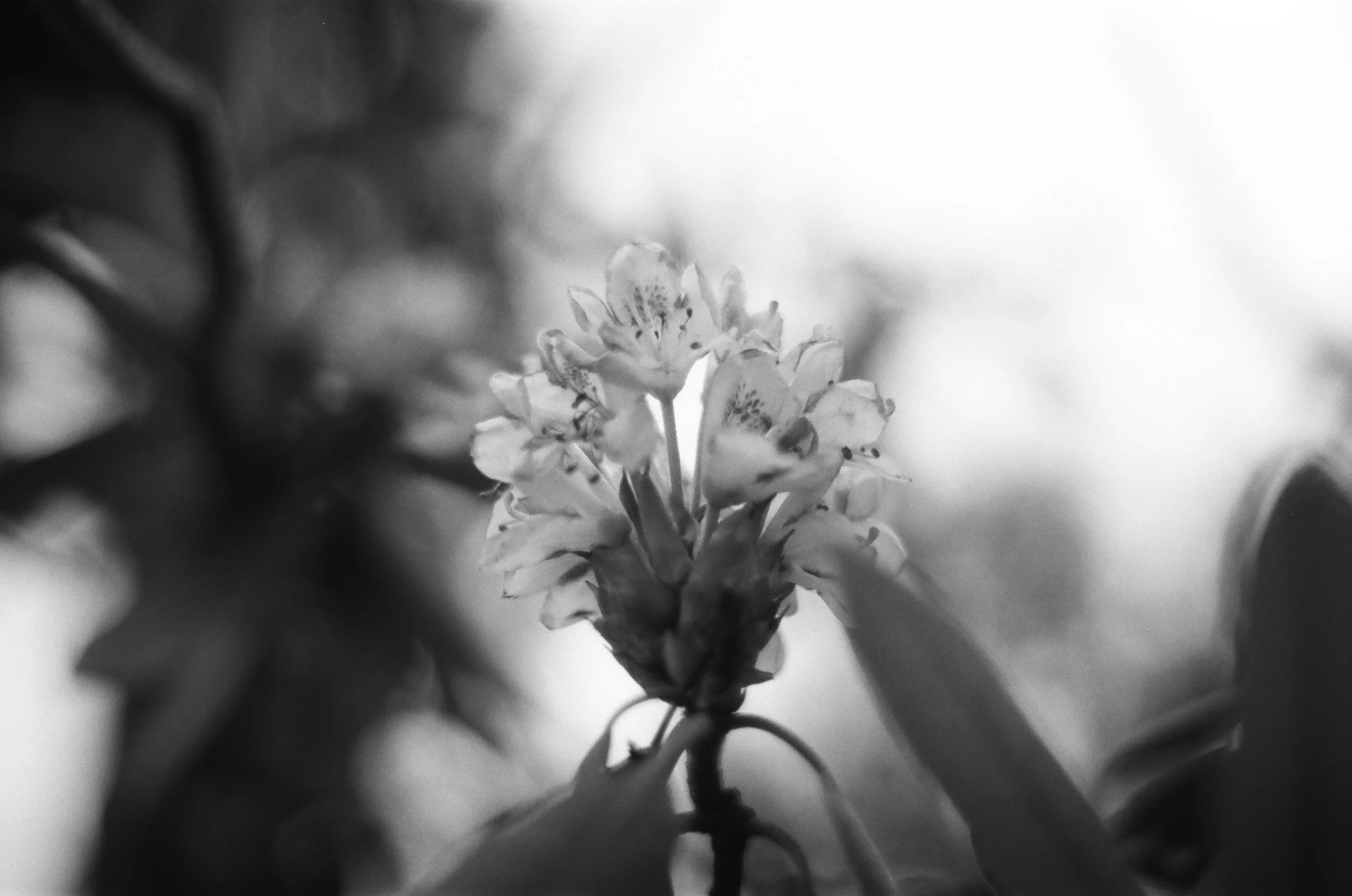Pentax ME Super
My only non-Polaroid camera with automatic exposure.
Pentax ME Super with 50mm f/1.7 SMC Pentax-M. (Color photos of the camera were made with a Nikon F, 55mm f/3.5 Micro-Nikkor-P.C, and Portra 400.)
Electronic shutter and automatic exposure
The Pentax ME Super was in production c. 1980-86. It has a K lens mount, an electronic shutter, and automatic exposure. Power is supplied by an LR44-type 1.5V button cell battery, commonly available today.
I think of this camera as an automatic Olympus OM-1:
It is very small, even a bit smaller than the OM-1.
The viewfinder is large and bright with split image focus, like the OM-1.
Form factor and handling feel are similar to the OM-1.
Olympus made automatic OM cameras, but I don’t have one. The ME Super and the Polaroid SX-70 are enough automation for me.
(Source: production dates in this article are from McKeown, 1996.)
Making Chinese dumplings Bethesda, Md. Pentax ME Super, 50mm f/1.7 SMC Pentax-M, FP4+, 2023.
It can be used manually, but…
The Pentax ME Super’s controls work great in aperture-priority automatic mode. It also has a manual mode but using it is a chore as there’s no shutter speed dial.
That’s because it was replaced with a ‘revolutionary new “pushbutton” manual exposure system’ in which ‘the fumbling characteristic of the traditional shutter speed dial has been eliminated’ (manual, p. 20). In real life, though, the pushbutton controls turn out to be non-intuitive and inconvenient.
It seems Pentax knew this. The camera manual advises, ‘You might consider “AUTO” the normal exposure mode and the others as auxiliary modes…’ (p. 10). This is good advice. I use the ME Super exclusively in automatic exposure mode. For manual exposure, I use a different camera.
Why the pushbutton design?
The Pentax ME (1976-81) had automatic exposure only. The ME Super, introduced in 1980, added manual capability, leaving the rest unchanged. Adding two tiny pushbuttons on the existing top deck was a less invasive design change than reconfiguring it for a shutter speed dial.
Plus, the dial control had been on 35mm cameras from the beginning and ‘revolutionary’ might have been thought good marketing at the time…
But what was old is now new. Today’s digital camera designs have old-style dials and knobs. Examples include the Nikon Zf mirrorless camera and the Fujifilm X100 series.
Flowering plant Bethesda, Md. Pentax ME Super, 50mm f/1.7 SMC Pentax-M, FP4+, 2023.
My only non-Polaroid camera with with usable automatic exposure
Other than the Polaroid SX-70, the Pentax ME Super is my only camera with a working automatic exposure capability. My Konica Auto S2 was built with auto exposure, but it requires obsolete Mercury batteries. Fortunately, that camera also has a manual mode with conventional controls which works fine. [Konica Auto S2 article: Pending]
There was a mechanical, manual sibling: the Pentax MX
Pentax built another 35mm SLR, the MX, which appeared in 1976. The MX was as small as the ME Super but had a mechanical shutter and manual exposure. A direct analog of the Olympus OM-1. I’d like to try an MX some day.
Kendall MIT subway station Cambridge, Mass. Pentax ME Super, 50mm f/1.7 SMC Pentax-M, FP4+, 2023.
Maintenance and repair
No maintenance done on this camera yet.
References / further reading
Camera manual: orphancameras.com
More references:
Keppler, H. 1976. The Pentax Way, 9th ed. Garden City, N.Y.: Amphoto.
McKeown, J.M. and J.C. 1996. McKeown’s Price Guide to Antique and Classic Cameras, 1997-1998. Grantsburg, Wis.: Centennial Photo.
Pentax History: Since 1919. https://www.ricoh-imaging.co.jp/english/pentax/pentaxhistory/ accessed Apr. 26, 2025.




